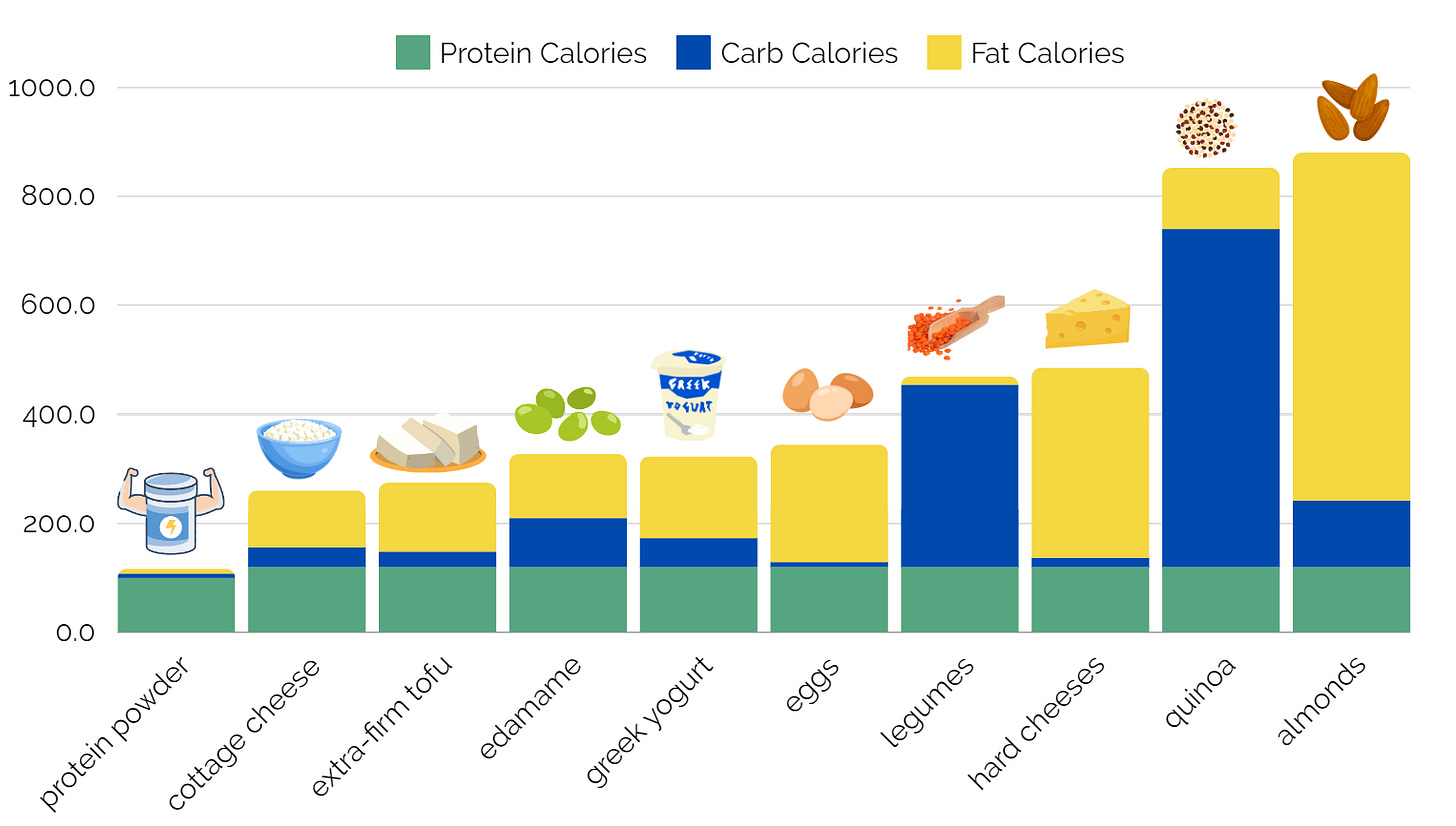Happy Thursday (or possibly Friday in some parts of the world)! I got so much feedback for last month’s Weeknight Simple Hot Tip on protein that I decided to continue the series for October. So, welcome to your Hot Tip #4.
I’m going to start with a small rant. I keep seeing articles or posts on social media with the hook ‘This food has more protein than an egg’. Or ‘2 eggs is not enough protein for breakfast’. Both of which are true, by the way. I’ve even said so myself.
But this post is in defense of the humble egg. Nature’s multivitamin. Etc. etc. But the reason I think it is a powerful source of protein is that it is very efficient. True, one egg has only 6 grams of protein. However, it is also only 60 calories!! There are not a lot of vegetarian foods which deliver 6 grams of protein in so few calories.
To help illustrate this point, here’s a chart I built for The Vegetarian Reset Lab. In Module 2, I teach how to leverage ‘protein anchors’ to get more protein at lunch and dinner. Here are 10 foods (not an exhaustive list) you can use as protein anchors, and how they compare in terms of calories and macronutrient distribution.
This chart tells you how much (in calories) of each food you would have to eat to get 30 grams of protein.
The y-axis represents calories. The x-axis represents foods. Each bar represents the number of calories, plus you can see how those calories break down into carbs, protein and fat.
For example - approximately 100 calories of protein powder can get you to 30g protein, whereas, if you wanted to get the same amount of protein from almonds, you would have to eat about 900 calories!
Towards the left of this chart, you see more ‘concentrated’ sources of protein, and as you go towards the right, they become much bigger sources of carbs or fat than protein.
Coming back to the humble egg, you can see that it is definitely a more concentrated source of protein than legumes, cheese, quinoa or nuts.
That being said, the fun part (I think) is when you mix and match and build your protein plate from diversified sources. Here is an example salad with 30g protein without soy, dairy or eggs, if you haven’t seen it already.
I hope this post got you thinking and gave you a whole new perspective on vegetarian proteins. Feel free to share this with a friend who’s also nerdy about food!



I don't and more and more experts don't put much thought into calories any more. I'd like to see Carbohydrates on the y-axis.
Super helpful. Great context. Thank you.